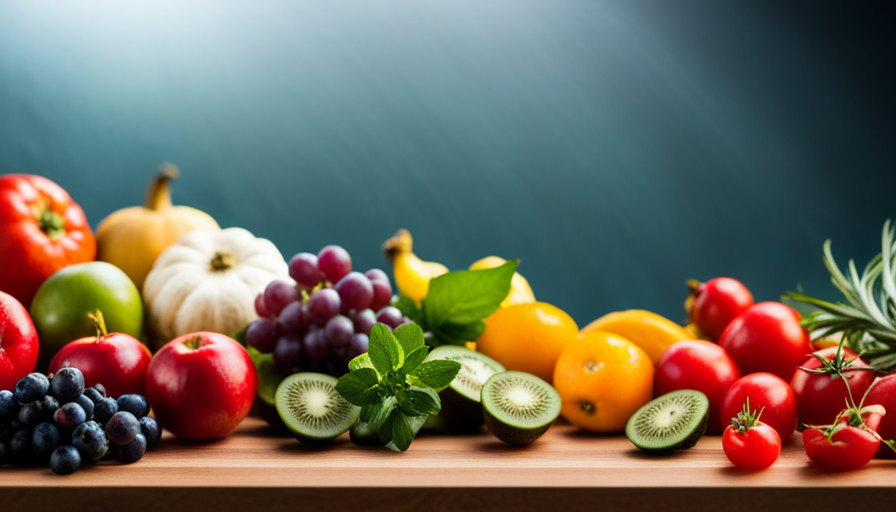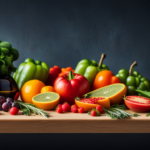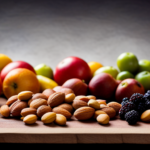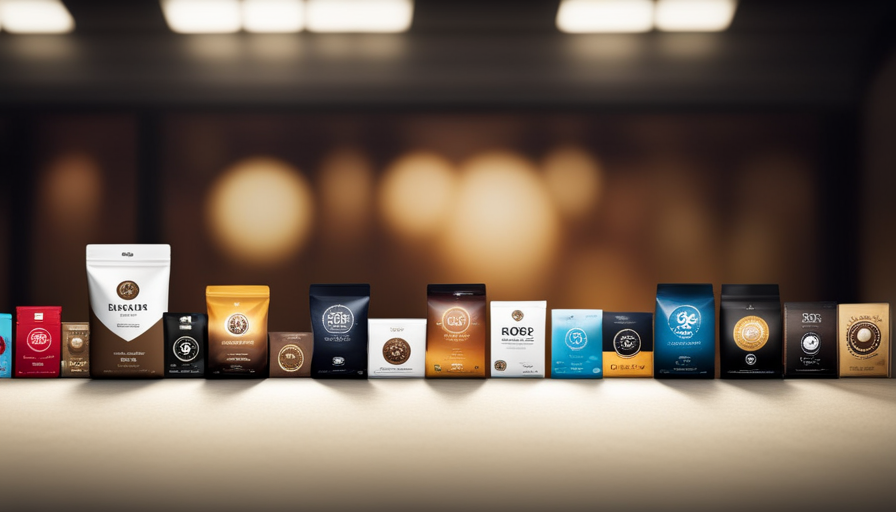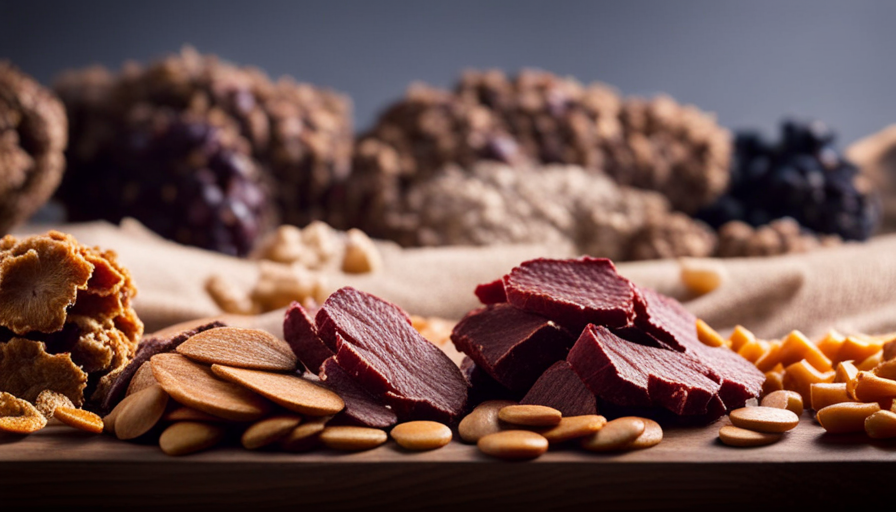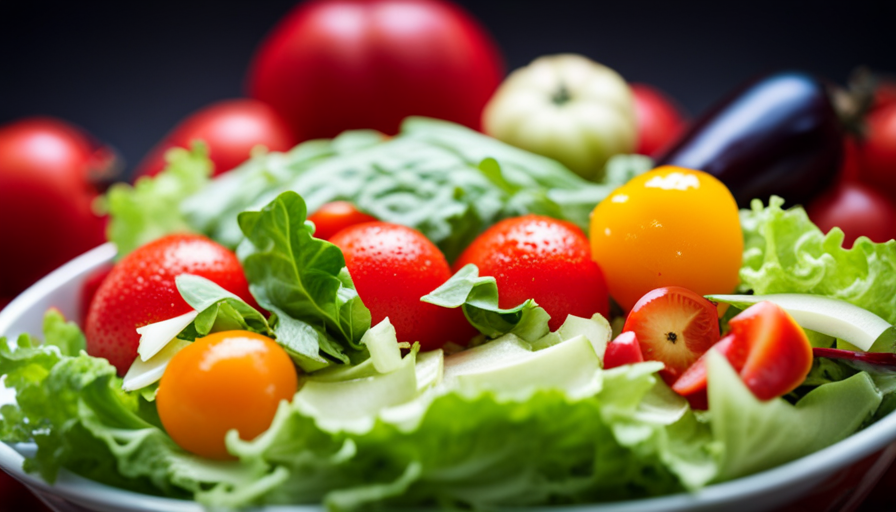In recent years, raw food diets have gained popularity, with supporters suggesting that this eating style is crucial for achieving optimal health and wellness. But how nutritious is a raw food diet really? Is it the ultimate answer to all our health issues, or simply a passing fad?
In this article, we will delve into the world of raw food diets and explore their potential benefits and risks. From weight loss and management to the impact on digestive health, mental and emotional well-being, we will examine the evidence behind these claims. Additionally, we will provide practical tips for those interested in following a raw food diet and highlight some potential drawbacks and considerations to keep in mind.
So, if you’ve ever wondered about the healthfulness of a raw food diet, read on to discover the truth behind the hype.
Key Takeaways
- Raw food diets can preserve natural enzymes and nutrients in food, leading to potential health benefits.
- Raw fruits and vegetables have a high nutritional value and fiber content, promoting digestive health and preventing constipation.
- Raw food diets may require careful planning and supplementation to ensure nutrient adequacy and meet caloric needs, particularly for athletes or physically demanding individuals.
- While raw food diets have potential benefits such as weight loss and improved digestion, they also come with challenges such as potential nutrient deficiencies and limited dining options in social situations. It is important to consider these factors before committing to a raw food diet and seek guidance from healthcare professionals or registered dietitians.
What is a Raw Food Diet?
A raw food diet entails consuming uncooked and unprocessed foods, which can potentially provide numerous health benefits. Many proponents of this diet claim that it helps to preserve the natural enzymes and nutrients in food, which are often destroyed during cooking. Additionally, raw food enthusiasts argue that this diet can lead to weight loss, improved digestion, and increased energy levels.
One of the main benefits of a raw food diet is its high nutrient content. Raw fruits and vegetables are packed with essential vitamins, minerals, and antioxidants that are crucial for maintaining optimal health. Moreover, the abundance of fiber in raw foods can contribute to a healthy digestive system and prevent constipation.
Another advantage of a raw food diet is the wide variety of delicious and nutritious recipes available. From raw salads and smoothies to raw desserts and snacks, there is no shortage of options for those following this dietary approach. This ensures that individuals can enjoy a diverse and satisfying diet while still reaping the benefits of raw food consumption.
Transitioning into the subsequent section about the nutritional benefits of a raw food diet, it’s important to understand the specific nutrients that can be obtained from this eating style.
Nutritional Benefits of a Raw Food Diet
For you, embracing a diet rich in uncooked and natural ingredients can nourish your body with essential nutrients and promote overall well-being. One of the key benefits of a raw food diet is its potential to enhance nutrient absorption. Raw foods are packed with enzymes that aid in the digestion and absorption of nutrients. Enzymes play a crucial role in breaking down food and making nutrients more accessible to the body.
By consuming raw foods, you ensure that these enzymes remain intact, maximizing the absorption of vitamins, minerals, and other essential nutrients.
Furthermore, a raw food diet can also boost your immune system. Raw fruits and vegetables are abundant in antioxidants, which help protect the body against harmful free radicals. These free radicals can cause cellular damage and weaken the immune system. By consuming raw foods rich in antioxidants, you provide your body with powerful defense mechanisms that can strengthen your immune system and promote optimal health.
Transitioning into the subsequent section about potential risks and challenges, it is important to note that while a raw food diet offers numerous nutritional benefits, it’s not without its challenges.
Potential Risks and Challenges
When it comes to a raw food diet, there are potential risks and challenges that need to be considered. One of the main concerns is the risk of nutrient deficiencies, as certain nutrients may be lacking in a raw food diet.
Additionally, it can be difficult to meet caloric needs on a raw food diet, as the volume of food needed to reach a sufficient calorie intake can be quite large.
Lastly, food safety concerns are another factor to consider, as raw foods can be more susceptible to contamination and foodborne illnesses.
Risk of nutrient deficiencies
Deficiencies in vital nutrients may plague those on a raw food regimen. While raw food diets can provide an abundance of vitamins, minerals, and antioxidants, there are potential risks of deficiencies due to limited nutrient absorption.
Raw foods often contain enzymes that can aid digestion, but cooking can actually enhance the bioavailability of certain nutrients. For example, the body can absorb more lycopene from cooked tomatoes compared to raw ones.
Additionally, some nutrients like vitamin B12, iron, and omega-3 fatty acids are more readily available in animal-based foods, which are typically excluded in a raw food diet. Therefore, careful planning and supplementation may be necessary to prevent nutrient deficiencies.
Transitioning to the subsequent section, meeting caloric needs on a raw food diet can also pose challenges.
Difficulty in meeting caloric needs
To maintain your energy levels on a raw food regimen, you may find it challenging to consume enough nourishing and satisfying plant-based meals throughout the day. Meeting your nutritional needs while following a raw food diet can be difficult, as it requires careful planning and consideration.
Raw foods are often less calorie-dense than cooked foods, which means you may need to eat larger quantities to meet your caloric needs. This can be especially challenging for individuals with higher energy requirements, such as athletes or those with physically demanding jobs.
Additionally, long-term sustainability of a raw food diet may be a concern, as it may be difficult to consistently meet all of your nutrient requirements solely through raw foods.
Transitioning into a discussion about food safety concerns, it is important to understand the potential risks associated with consuming raw foods.
Food safety concerns
Consuming uncooked ingredients raises concerns about the safety of what we put into our bodies. When following a raw food diet, it’s important to be aware of the potential risks associated with foodborne illnesses and food contamination. Here are three key points to consider:
-
Increased risk of foodborne illnesses: Raw foods, especially meat, poultry, seafood, and eggs, can harbor harmful bacteria like Salmonella and E. coli. These bacteria can cause severe gastrointestinal symptoms and lead to serious health complications.
-
Difficulty in proper food handling: Raw food diets often require more careful handling and preparation techniques to minimize the risk of contamination. This includes thorough washing of fruits and vegetables, proper storage of perishable items, and avoiding cross-contamination between raw and cooked foods.
-
Lack of cooking to kill bacteria: Cooking is an effective method to kill bacteria and other pathogens that may be present in food. By consuming raw ingredients, the risk of consuming harmful bacteria is increased.
Transitioning to the subsequent section about weight loss and management, it’s important to consider the potential risks associated with a raw food diet while aiming for weight loss and management.
Weight Loss and Management
Looking to shed a few pounds and manage your weight more effectively? A raw food diet can be a game-changer for you! When it comes to weight loss techniques and weight management strategies, incorporating raw foods into your diet can have numerous benefits.
Raw foods are typically low in calories and high in fiber, making them a great choice for those looking to lose weight. Additionally, raw food diets often eliminate processed and high-calorie foods, which can contribute to weight gain.
Raw fruits and vegetables are packed with nutrients and antioxidants that can aid in weight loss. These foods are also naturally hydrating and can help you feel fuller for longer periods, reducing the likelihood of overeating. Moreover, raw food diets encourage the consumption of whole, unprocessed foods, which can lead to a healthier overall lifestyle.
However, it’s important to note that weight loss and management are complex processes that involve various factors, including physical activity and portion control. While a raw food diet can be a beneficial tool, it’s essential to approach weight loss holistically and consult with a healthcare professional for personalized advice.
Transitioning to the impact on digestive health, raw food diets can have both positive and negative effects on our digestive system.
Impact on Digestive Health
When it comes to the impact of a raw food diet on digestive health, there are a few key points to consider.
Firstly, many people find that their digestion improves when following a raw food diet, as it’s rich in fiber and enzymes that promote healthy digestion.
Secondly, this type of diet has been linked to a reduction in digestive disorders such as bloating, gas, and constipation.
Lastly, individuals often report a decrease in discomfort and overall improvement in their gut health when they switch to a raw food diet.
Improved digestion and gut health
Improved digestion and gut health are benefits of a raw food diet, with studies showing that it can lead to a significant reduction in bloating and digestive issues. When we consume raw foods, we provide our bodies with essential enzymes and fiber that aid in digestion. These enzymes help break down food more efficiently, allowing for better nutrient absorption. Additionally, raw foods are rich in prebiotics, which promote the growth of beneficial bacteria in the gut microbiome. This, in turn, improves gut health and overall digestion.
| Benefits of Raw Food Diet |
|---|
| Improved digestion |
| Reduced bloating |
| Enhanced nutrient absorption |
| Promotes beneficial gut bacteria |
By incorporating more raw foods into our diet, we can experience improved digestion and gut health. This can lead to a reduction in digestive disorders and discomfort.
Reduction in digestive disorders and discomfort
By incorporating more raw foods into our meals, we can experience a significant decrease in digestive disorders and discomfort. Raw foods, such as fruits, vegetables, and nuts, are rich in enzymes that aid in digestion and reduce inflammation in the gut.
This reduction in inflammation can alleviate symptoms of digestive disorders like bloating, gas, and constipation. Additionally, raw foods are packed with essential nutrients that are easily absorbed by the body. When we cook food, it can sometimes destroy some of these nutrients, making them less bioavailable.
By consuming raw foods, we maximize our nutrient intake and improve nutrient absorption. This can have a positive impact on our overall health and well-being. As we explore the effect of a raw food diet on chronic disease prevention, we can see how incorporating more raw foods into our diet can have a powerful impact on our long-term health.
Effect on Chronic Disease Prevention
If you’re skeptical about the health benefits of a raw food diet, consider this: incorporating more raw fruits and vegetables into your daily meals can significantly reduce your risk of chronic diseases like heart disease and diabetes. Research has shown that a raw food diet can have a positive effect on heart health by lowering cholesterol levels and reducing blood pressure. The high fiber content in raw fruits and vegetables can help improve cardiovascular health by reducing the risk of developing plaque in the arteries.
Additionally, the antioxidants found in raw foods can help prevent cancer by neutralizing harmful free radicals in the body. Studies have shown that a diet rich in raw fruits and vegetables can lower the risk of certain types of cancer, such as colorectal and lung cancer.
It’s important to note that while a raw food diet can be beneficial for preventing chronic diseases, it’s not a guaranteed cure. It should be seen as part of an overall healthy lifestyle, which includes regular exercise and a balanced diet.
In addition to its physical health benefits, a raw food diet can also have a positive impact on mental and emotional well-being. Transitioning to a raw food diet can increase your overall energy levels, improve digestion, and enhance your mood.
So, if you’re looking to improve your health and reduce your risk of chronic diseases, incorporating more raw fruits and vegetables into your daily meals is definitely worth considering.
Mental and Emotional Well-being
Elevating your mood and boosting your energy levels, incorporating more vibrant, plant-based goodness into your daily meals can be a powerful catalyst for enhancing your mental and emotional well-being. A raw food diet, rich in fruits, vegetables, nuts, and seeds, provides essential nutrients and antioxidants that support mental health and emotional well-being.
Here are five ways a raw food diet can positively impact your mental and emotional well-being:
-
Increased serotonin levels: Raw foods, especially those high in tryptophan like bananas and spinach, can boost serotonin production, a neurotransmitter that regulates mood and promotes feelings of happiness and well-being.
-
Reduced inflammation: The anti-inflammatory properties of raw foods can alleviate symptoms of depression and anxiety, as chronic inflammation is linked to mental health disorders.
-
Enhanced brain health: Raw foods rich in omega-3 fatty acids, such as chia seeds and walnuts, support brain function, improve memory, and reduce the risk of cognitive decline.
-
Improved gut health: A healthy gut is essential for mental health, and raw foods provide fiber and probiotics that promote a diverse and balanced gut microbiome.
-
Increased vitality: The abundance of vitamins, minerals, and antioxidants in raw foods nourishes the body and boosts energy levels, leading to a more positive outlook on life.
Transitioning to a raw food diet can have significant benefits for your mental and emotional well-being. However, it’s important to know how to practically incorporate this lifestyle change into your routine.
Practical Tips for Following a Raw Food Diet
When it comes to following a raw food diet, there are a few practical tips that can make it easier and more enjoyable.
Meal planning and preparation is key to ensure you have a variety of nutritious options on hand.
Essential kitchen tools and equipment, such as a high-speed blender and food processor, can help you effortlessly create delicious raw meals.
Lastly, incorporating variety and creativity into your raw food meals is important to prevent boredom and ensure you’re getting a wide range of nutrients.
Meal planning and preparation
Meal planning and preparation is key to maintaining a raw food diet, and did you know that 65% of people who follow a raw food diet report feeling more energized and satisfied with their meals? To effectively plan and prepare meals, consider the following tips:
-
Create a weekly meal plan: This helps you stay organized and ensures you have all the necessary ingredients on hand.
-
Prep ingredients in advance: Wash, chop, and store fruits and vegetables ahead of time to save time during meal preparation.
-
Use time-saving techniques: Opt for quick and easy recipes, such as salads or smoothies, for busy days.
-
Batch cooking: Cook larger quantities of certain raw foods, such as grains or legumes, and store them in the refrigerator for future use.
By implementing these meal planning and preparation strategies, you can save time and make following a raw food diet more convenient. Speaking of convenience, let’s explore the essential kitchen tools and equipment needed for a successful raw food journey.
Essential kitchen tools and equipment
Transform your kitchen into a culinary oasis with these must-have tools and equipment for your raw food journey. Proper kitchen organization is essential for easy meal preparation and ensures that you have everything you need at your fingertips. Invest in a good set of storage containers to keep your fruits, vegetables, and nuts fresh and easily accessible. A high-quality blender is also a must for creating smoothies and sauces. Additionally, a food processor is great for chopping and shredding ingredients quickly. Finally, a spiralizer is a fantastic tool for creating delicious raw pasta alternatives using zucchini or other vegetables. By having these essential kitchen tools, you can streamline your meal preparation and make your raw food journey even more enjoyable. In the next section, we will explore how to incorporate variety and creativity into raw food meals seamlessly.
Incorporating variety and creativity into raw food meals
To add excitement and diversity to your culinary experience, explore the endless possibilities of incorporating various ingredients and innovative techniques in your raw meals. The raw food diet offers a wide range of variety options and creative recipes that can keep your taste buds satisfied and your body nourished.
From colorful salads with a mix of fresh vegetables and fruits to zucchini noodles topped with flavorful sauces, the options are truly limitless. You can also experiment with dehydrated snacks like kale chips or raw desserts like avocado chocolate mousse. By trying out different combinations and flavors, you can create meals that are not only healthy but also delicious.
However, it’s important to consider some potential drawbacks and considerations when following a raw food diet.
Potential Drawbacks and Considerations
But beware, my friend, for there are pitfalls aplenty when embarking on this raw food journey. While a raw food diet can offer many health benefits, it’s important to consider the potential health risks and long-term sustainability of this lifestyle choice. Here are three key considerations to keep in mind:
-
Nutritional deficiencies: Raw food diets often lack certain essential nutrients such as vitamin B12, iron, and omega-3 fatty acids. These deficiencies can lead to fatigue, weakened immune function, and an increased risk of developing nutrient-related health conditions.
-
Digestive challenges: Raw foods can be harder to digest compared to cooked foods. This can cause bloating, gas, and discomfort, especially for individuals with sensitive digestive systems. It’s important to listen to your body and make adjustments as needed.
-
Social limitations: Following a strict raw food diet can be challenging in social situations. It may limit your options when dining out or attending gatherings, potentially causing feelings of isolation or exclusion.
Considering these potential drawbacks, it’s important to weigh the benefits and challenges of a raw food diet before committing to it. In the next section, we’ll explore the conclusion and final thoughts on the topic.
Conclusion and Final Thoughts
In light of the potential drawbacks and considerations discussed, it’s crucial to carefully evaluate the overall feasibility and long-term viability of adopting a raw food lifestyle.
One important factor to consider is meal frequency. While the raw food diet encourages frequent snacking on fruits, vegetables, and nuts, it may be challenging for some individuals to maintain this level of meal frequency. Busy schedules and limited access to fresh produce can pose obstacles to consistently following a raw food diet.
Additionally, the limited variety of foods in a raw food diet may lead to nutrient deficiencies if not carefully planned. Another aspect to consider is the long-term sustainability of a raw food lifestyle. While some people may find success and satisfaction with this way of eating, others may struggle to maintain it in the long run.
The strict restrictions on cooking and processing may make it difficult to socialize and dine out with friends and family. Moreover, the monotony of eating raw foods only can lead to boredom and cravings for cooked foods.
While the raw food diet has its potential benefits, such as increased nutrient intake and weight loss, it’s important to carefully consider the potential drawbacks and challenges. Evaluating the feasibility of maintaining frequent meals and the long-term sustainability of a raw food lifestyle is essential before making a commitment.
Consulting with a healthcare professional or registered dietitian can provide valuable guidance and support in making an informed decision about adopting a raw food diet.
Frequently Asked Questions
Can a raw food diet provide all the necessary nutrients for optimal health?
Yes, a raw food diet can provide all the necessary nutrients for optimal health. However, it’s important to be aware of potential deficiencies and health risks associated with this diet. Raw food diets can lack certain nutrients like vitamin B12, iron, and calcium. Moreover, there’s a risk of bacterial contamination from raw foods. It’s advisable to consult with a healthcare professional or registered dietitian to ensure proper nutrient intake and minimize potential health risks.
How does a raw food diet affect energy levels and overall vitality?
A raw food diet can have positive effects on energy levels and overall vitality. By consuming raw, unprocessed foods, you’re providing your body with nutrient-dense options that can increase energy levels.
Additionally, the raw food diet benefits weight loss by promoting a high intake of fruits, vegetables, and whole grains, which are low in calories and high in fiber.
However, it’s important to ensure that you’re still getting all the necessary nutrients for optimal health while following this diet.
Are there any specific foods that should be avoided on a raw food diet?
When following a raw food diet, it’s important to be aware of certain foods that should be avoided due to potential risks.
According to a study published in the Journal of Nutrition, there’s evidence suggesting that consuming raw eggs can increase the risk of foodborne illnesses such as salmonella. Additionally, raw meat and fish can also pose similar risks. It’s recommended to thoroughly cook these foods to ensure safety and reduce the likelihood of foodborne illnesses.
Can a raw food diet be sustainable in the long term?
In the long term, a raw food diet may not be sustainable due to potential nutritional deficiencies. This diet emphasizes fresh fruits, vegetables, nuts, and seeds, but it may lack essential nutrients like protein, iron, and calcium. Without proper planning, deficiencies can occur, leading to health issues. However, incorporating a variety of raw and cooked foods can help ensure a balanced diet and mitigate the risk of deficiencies. Consulting with a healthcare professional or registered dietitian is recommended for personalized guidance.
What are some practical tips for incorporating more raw foods into a regular diet?
Practical tips for incorporating more raw foods into a regular diet include gradually increasing raw food intake, experimenting with different recipes and flavors, and incorporating raw snacks like fruits and vegetables into meals.
Benefits of adding raw foods can include increased nutrient intake, improved digestion, and weight management. However, challenges may include meal planning, potential nutrient deficiencies, and adjusting to a different taste.
It’s important to consult with a healthcare professional before making any major dietary changes.
Does Switching to a Raw Food Diet Impact Your Overall Health?
Switching to a raw food diet can definitely change the way you feel. Many people report feeling more energetic, lighter, and overall healthier after making the transition. The increase in nutrients from the raw fruits and vegetables can have a positive impact on your overall health.
Conclusion
In conclusion, the raw food diet can offer numerous nutritional benefits, such as increased intake of vitamins and minerals. However, it is important to consider the potential risks and challenges associated with this diet, such as the need for careful meal planning and potential nutrient deficiencies.
While some individuals may find success with weight loss and improved digestive health on a raw food diet, it’s crucial to prioritize balance and variety in food choices.
Remember, "You are what you eat," so make informed decisions about your diet to support your overall health and well-being.

